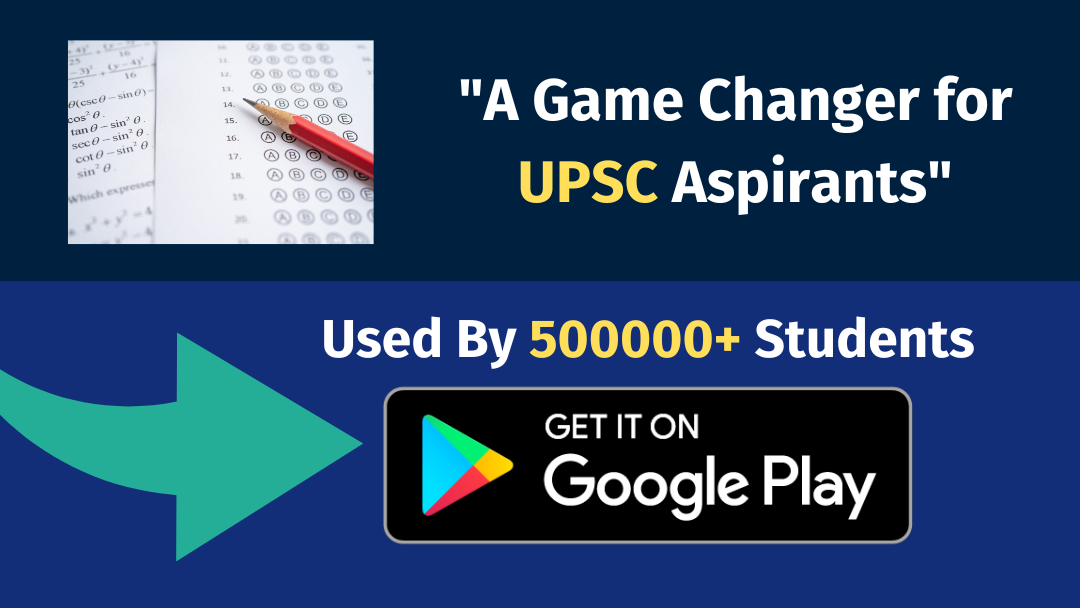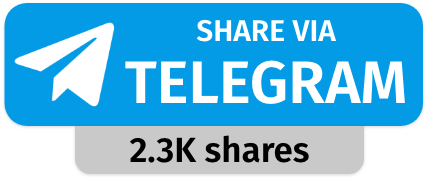Today’s Current Affairs: 3rd September 2025 for UPSC IAS exams, State PSC exams, SSC CGL, State SSC, RRB, Railways, Banking Exam & IBPS, etc
Table of Contents
Swarnamukhi River : Plan For Protection
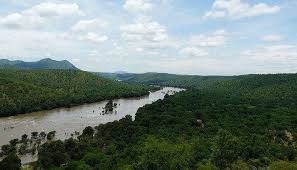
The Tirupati Urban Development Authority (TUDA) recently announced Operation SWARNA, a massive plan to rescue the River Swarnamukhi from the clutches of land grabbers, revive its flow area and rejuvenate it to ensure sustenance.
- Swarnamukhi River is a river in Andhra Pradesh.
- It is an east-flowing river basin having a small catchment area of 3,225 sq.km.
- It rises at an elevation of 300 m in the Eastern Ghat ranges near Pakala village in the Chittur district of Andhra Pradesh.
- It runs generally in the northeastern direction passing through the famous Tirupati hills before joining into the Bay of Bengal.
- Its total length is 130 km.
- It flows through the sacred regions of Tirumala and Srikalahasti, where notable Hindu temples like the Srikalahasteeswara Temple are located.
- Unlike larger river systems, the Swarnamukhi is independent, meaning it does not join or receive water from major river networks. Its flow is heavily dependent on rainfall, particularly in its upper catchment.
- The average annual rainfall in the Swarnamukhi basin decreases from 1270 mm at the eastern extremity of the basin to 762 mm at the western extremity.
- Its main tributary is the Kalyani River, across which the Kalyani Dam was constructed in 1977.
Air Quality Life Index : New Study

Air pollution has emerged as India’s most severe health threat, reducing the country’s average life expectancy by 3.5 years, according to the Air Quality Life Index (AQLI) 2025 report .
- Air Quality Life Index (AQLI) measures particulate air pollution’s impact on life expectancy.
- Developed by Michael Greenstone and Energy Policy Institute (EPIC) at the University of Chicago, the AQLI quantifies pollution’s effects.
- The AQLI combines research on long-term air pollution exposure with global particulate pollution measurements.
- It provides insight into the true cost of air pollution on communities worldwide.
Highlights of the AQLI 2025 Report:
- Air pollution has emerged as India’s most severe health threat, reducing the country’s average life expectancy by 3.5 years.
- Toxic air robs Indians of nearly twice as many years as childhood and maternal malnutrition and more than five times the impact of unsafe water, sanitation, and handwashing.
- All 1.4 billion Indians live in areas where pollution levels exceed the World Health Organization’s (WHO’s) safe limit of 5 µg/m³ for PM2.5.
- The northern belt is still the world’s most polluted zone, with 544.4 million people (38.9 percent of India’s population) living under severe air pollution.
- Delhi-NCR is the worst hit, with residents facing a loss of 8.2 years in life expectancy (based on WHO’s standard).
- Bihar: 5.6 years lost
- Haryana: 5.3 years lost
- Uttar Pradesh: 5 years lost
- Even by India’s weaker PM2.5 standard of 40 µg/m³, Delhi-NCR residents would still lose 4.74 years of life expectancy.
- Shockingly, the report notes that 46 percent of Indians live in areas that exceed even India’s own PM2.5 standards.
- If pollution levels were reduced to meet this national benchmark, Indians could gain an average of 1.5 years of life expectancy.
- Meeting WHO’s stricter 5 µg/m³ guideline could add up to 9.4 months even in cleaner regions.
- The AQLI report underlines that South Asia is the most polluted region globally, with PM2.5 concentrations rising 2.8 percent in 2023 after a brief dip in 2022.
Clopidogrel:
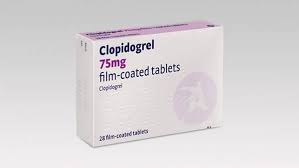
Doctors now believe that clopidogrel, a well-known antiplatelet medication, could be more effective than aspirin for long-term prevention of heart attacks—especially in those at high risk.
- Clopidogrel is a medication that belongs to the class of antiplatelet agents that prevent blood clots from forming.
- It is commonly prescribed to reduce the risk of heart attacks and strokes in people and those with peripheral arterial disease or unstable angina.
- Clopidogrel works by blocking the action of platelets, which are blood cells that play a key role in forming blood clots, to reduce the risk of serious cardiovascular events.
- Some of the common uses of Clopidogrel include:
- Preventing heart attacks
- Preventing strokes
- Treating peripheral artery disease
- Preventing blood clots after certain medical procedures
- Preventing blood clots in patients with atrial fibrillation.
- Clopidogrel is usually taken orally, with or without food.
- However, the dosage and frequency of the medication will depend on the individual’s medical condition, age, and response to treatment.
- Clopidogrel is typically taken once daily, preferably at the same time each day, to maintain consistent levels of the medication in the body.
Mauritania : In News
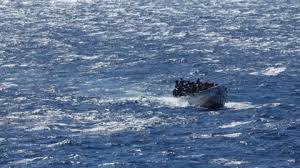
A migrant boat sank off Mauritania’s coast earlier recently, leaving at least 49 people dead and around 100 missing.
- Mauritania is a country in northwest Africa.
- It occupies an area of 1,030,000 sq. km.
- It is a country of the Sahel region (a belt across Africa between the arid Sahara to the north and the humid savannas to the south).
- It borders four other nations: West Sahara, Senegal, Algeria, and Mali. The Atlantic Ocean lies to the west.
- Approximately 90% of its landmass is located within the Sahara Desert.
- The most prominent feature of this region is the Guelb er Richat, also known as the Eye of the Sahara, which is a deeply eroded dome consisting of a variety of intrusive and extrusive igneous rocks.
- The Senegal River is the most important waterway in the country.
- Mauritania has an abundance of natural resources, including iron ore, gold, copper, gypsum, and phosphate.
- Extractive commodities make up 75 percent of Mauritania’s total exports (exploration for oil is ongoing), with fishing making up another 20 percent.
- The nation’s coastal waters are said to be among the richest fishing areas in the world.
Multi-Lane Free Flow (MLFF) Tolling System:
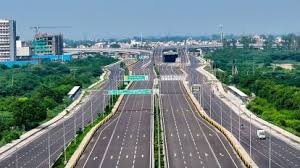
The Indian Highways Management Company Limited (IHMCL), a company promoted by NHAI has signed an agreement with ICICI Bank to implement country’s first comprehensive Multi-Lane Free Flow (MLFF) tolling system at Choryasi Fee Plaza in Gujarat on NH-48.
- Multi-Lane Free Flow (MLFF) Tolling System is a barrier-less tolling system that enables transactions through reading of FASTag and Vehicle Registration Number (VRN) by High performance RFID Readers and ANPR Cameras.
- It enables seamless toll collection without stopping vehicles at fee plazas, reducing congestion and travel time leading to enhanced fuel efficiency and lowering emissions.
- Implementation of MLFF will also contribute towards improving toll revenue collection and creating a smarter, faster and more efficient National Highway network across the country.
- NHAI is India’s premier highway infrastructure creator entrusted with developing, maintaining, and managing National Highways.
- It is a statutory body under the administrative control of the Ministry of Road Transport and Highways.
- It was constituted under National Highways Authority of India Act, 1998 and made operational in February 1995.
- It consists of a full time Chairman, and not more than five full time Members and four part time Members who are appointed by the Central Government.
- The part time Members are the Secretary (RT&H), Secretary (Expenditure), Secretary (Planning) and DG (RD) & SS.
Srivilliputhur–Meghamalai Tiger Reserve:

Concerns have been raised over the unauthorised construction and repair of three roads in Theni district within the Srivilliputhur–Meghamalai Tiger Reserve (SMTR).
- Srivilliputhur–Meghamalai Tiger Reserve is spread across the districts of Theni, Virudhunagar and Madurai in Tamil Nadu.
- It lies in the ecologically sensitive Western Ghats region.
- It was formed in February 2021 by combining Grizzled Squirrel Wildlife Sanctuary and Megamalai Wildlife Sanctuary.
- It functions as a connecting link between Kerala’s Periyar Tiger Reserve and Tamil Nadu’s Southern Kalakkad-Mundanthurai Tiger Reserve.
- The Srivilliputhu Megamalai Tiger Reserve (SMTR) area primarily relies on three perennial rivers: Vaigai, Suruliyaru, and Shanmuganathi.
- It’s a blend of tropical evergreen and semi-evergreen forests, dry deciduous and moist mixed deciduous woods, and grasslands.
- Elephants, Tiger, Leopard, Nilgiri Tahr, Gaur, Spotted Deer, Barking Deer, Sambar Deer, Wild Boar, Porcupine, Nilgiri Langur, Lion-Tailed Macaque etc.
PRATUSH Radiometer:

Scientists at the Raman Research Institute have proposed a pioneering mission called PRATUSH designed to unlock the Cosmic Dawn.
- Probing ReionizATion of the Universe using Signal from Hydrogen (PRATUSH) is a radio telescope to be sited on the moon’s far side.
- It is built by the Raman Research Institute(RRI) in Bengaluru with active collaboration from the Indian Space Research Organisation (ISRO).
- PRATUSH will carry a wideband frequency-independent antenna, operating over the frequency band 30-250 MHz, a self-calibratable analog receiver, and a digital correlator with high spectral resolution.
- The observing strategy of PRATUSH will be to continually observe large sky regions, and recording spectra of the beam-averaged radio emission with a high spectral resolution of 100 kHz.
- The nominal lifetime of the payload will be two years for achieving high signal-to-noise ratio with sufficient sky-coverage.
- The preferred orbit for the payload will be a circumlunar orbit to enable a measurement of radio sky spectrum from the dark and far side of the Moon.
- At the heart of PRATUSH’s innovative design lies an unexpectedly modest piece of technology: a compact single-board computer (SBC). Built initially around a Raspberry Pi, the SBC is serving as the master controller for the radiometer system.
Killer whales : New Study
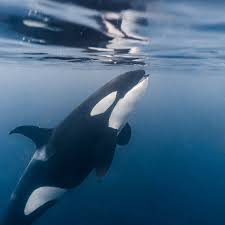
New study has found that killer whales may be exploring human behaviour by offering them whole prey and waiting for them to respond.
- Killer whales is also known as Orcas which is found across the world and it is the ocean’s top predator.
- It is the largest member of the Delphinidae family, or dolphins and are the most widely distributed of all cetaceans.
- Members of this family include all dolphin species, as well as other larger species, such as long-finned pilot whales and short-finned pilot whales, whose common names also contain “whale” instead of “dolphin”.
- Killer whales are highly social, and most live in social groups called pods (groups of maternally related individuals seen together more than half the time).
- Killer whales rely on underwater sound to feed, communicate, and navigate.
- They are one of the most recognizable marine mammals, with their distinctive black and white bodies.
- Globally, killer whales occur in a wide range of habitats, in both open seas and coastal waters.
- Killer whales are at high risk of becoming entangled in fishing gear. Also habitat loss is a major concern.
Exercise Yudh Abhyas:
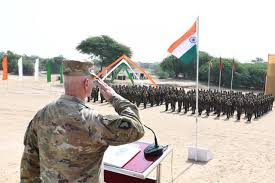
An Indian Army contingent has departed for Fort Wainwright, Alaska, USA, to participate in the 21st edition of the Exercise Yudh Abhyas.
- It is the joint military exercise held between India and USA.
- The Indian contingent, comprising personnel from a battalion of the Madras Regiment is taking part in this exercise.
- Over two weeks, troops will rehearse a spectrum of tactical drills including heliborne operations, employment of surveillance resources and unmanned aerial systems, rock craft, mountain warfare, casualty evacuation, combat medical aid and the integrated use of Artillery, Aviation and Electronic Warfare systems.
- In addition, subject-matter experts from both armies will conduct working groups on critical domains such as UAS and Counter-UAS operations, information warfare, communications and logistics.
- The exercise will culminate in jointly planned and executed tactical manoeuvres, ranging from live-fire exercises to high-altitude warfare scenarios, with a focus on improving capabilities for United Nations peacekeeping operations and strengthening preparedness for multi-domain challenges.
UDISE+ 2024-25 report:
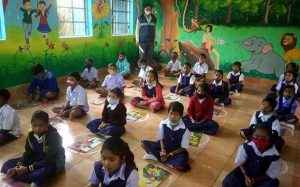
The UDISE+ 2024-25 report released by the Ministry of Education highlights critical gaps in India’s school infrastructure, digital access, and teacher availability.
- Unified District Information System for Education Plus (UDISE+) is an annual national data system for school education (Grades I–XII).
- It covers infrastructure, enrolment, teacher strength, training, digital readiness, health facilities, and learning environment across government, aided, and private schools.
Highlights (2024-25):
- Only 65% of schools have computers; just 58% functional.
- Internet access: 63% overall; Gov. schools (58.6%) vs. private (77.1%).
- Toilets: 98.6%, Hand-wash: 95.9%, Drinking water: 99%.
- Yet, >25,000 schools lack working electricity.
- 5.1% schools have <10 students.
- Zero-enrolment schools common in Ladakh (32.2%), Arunachal & Uttarakhand (22%).
- Teacher Shortages: PTR fine at primary (20:1) but alarming in higher classes: Jharkhand (47:1), Maharashtra & Odisha (37:1).
- RTE norm = 30:1; NEP recommends 20–25:1.
- Teacher Training:
- National average ~91% trained.
- Meghalaya lowest (72% at primary, 80% at upper-primary).
- South (Kerala, Tamil Nadu) near universal coverage of toilets, internet.
- Eastern & NE states lag behind: West Bengal (18.6% internet), Meghalaya (26.4%).
- Medical check-ups in only 75.5% schools; Bihar (32.7%), Nagaland (44.9%).
CEREBO : Indigenous Brain Tool

CEREBO, an indigenous hand-held diagnostic device developed by ICMR with AIIMS Bhopal, NIMHANS Bengaluru, and Bioscan Research, has been launched to detect traumatic brain injuries (TBIs) within a minute.
- CEREBO – Indigenous Brain Tool is a hand-held, portable, non-invasive diagnostic device for brain injuries.
- It Uses near-infrared spectroscopy + machine learning to detect brain abnormalities within a minute.
- Developed by Collaboration between ICMR, Medical Device & Diagnostics Mission Secretariat (MDMS), AIIMS Bhopal, NIMHANS Bengaluru, and Bioscan Research.
- Aim is to provide a low-cost, rapid, radiation-free diagnostic tool for Traumatic Brain Injuries (TBIs), especially where CT/MRI access is limited.
- Features Detects intracranial bleeding and brain edema in under a minute.
- Safe for infants and pregnant women.
- Can be used by paramedics and unskilled staff in ambulances, rural clinics, trauma centres, and disaster zones.
- Colour-coded results, easy to interpret.
- Validated through multi-centre clinical trials; approved for emergency and military use.
The World Liberty Financial tokens:

The World Liberty Financial tokens ($WLFI), linked to the Trump family’s cryptocurrency venture, began trading on major exchanges like Binance, OKX, and Bybit.
- It is a cryptocurrency token ($WLFI) under the World Liberty Financial DeFi platform.
- Functions alongside a stablecoin issued by the venture.
- Initiated in 2024 by the Trump family and business partners, with Donald Trump reportedly earning over $500 million from the project.
- Initially sold as non-tradable tokens that granted holders voting rights on governance issues (e.g., code changes).
- Now tradable on major crypto exchanges, allowing spot trading and perpetual futures.
- Limited circulating supply at launch, with future allocations governed by investor votes.
Japan Post Bank announced it will launch a digital yen:
Japan Post Bank announced it will launch a digital yen (DCJPY) by fiscal 2026, developed with DeCurret DCP, marking one of the biggest government-linked pushes into blockchain-based deposit currencies. Digital Yen – DCJPY is a blockchain-based deposit currency, fully backed 1:1 by fiat yen.
Unlike typical stablecoins, it is issued through the regulated banking system, making it more secure and credible. Launched by: Japan Post Bank, with shareholders including the Japanese government, in collaboration with DeCurret DCP (a subsidiary of Internet Initiative Japan). Aim is to enable instant, transparent, and convenient digital transactions for depositors, to expand the use of blockchain in mainstream finance, including digital securities and asset tokenization. Customers convert yen deposits into DCJPY tokens. These tokens can then be used for real-time transactions of digital securities and blockchain-based assets. Entirely ledgered on blockchain, ensuring traceability and transparency.
A 6.0-magnitude earthquake struck eastern Afghanistan:
A 6.0-magnitude earthquake struck eastern Afghanistan near Jalalabad, killing over 800 people and injuring at least 2,800, with widespread destruction across Kunar, Nangarhar, and Laghman provinces. Afghanistan is a landlocked, multi-ethnic country in south-central Asia, historically at the crossroads of trade routes linking South Asia, Central Asia, the Middle East, and Europe. Known for its strategic location in the “Great Game” between Britain and Tsarist Russia, and later as the theatre of Cold War conflicts.Capital: Kabul.Neighbouring Nations: Pakistan, India, Iran, Turkmenistan, Uzbekistan, Tajikistan, and short border with Xinjiang (China) via Wakhan Corridor.
Kapas Kisan App Launched to Empower Cotton Farmers:
Union Textiles Minister Giriraj Singh launched the Kapas Kisan App on September 2, 2025. The mobile application is designed to streamline the procurement of cotton under the Minimum Support Price (MSP) scheme, offering farmers a transparent, fast, and farmer-first digital platform to register, book slots, and track payments.
India Offers 1,000 E-Scholarships to Afghan Students for 2025–26:
India has announced 1,000 e-scholarships for Afghan students for the academic year 2025–26. The scholarships will be granted under the Special Scholarship Scheme for Afghan Nationals (SSSAN) administered by the Indian Council for Cultural Relations (ICCR) through the e-VidyaBharati (e-VB) i-learn portal. This initiative reaffirms India’s support for education, capacity building, and people-to-people ties with Afghanistan.The scholarships provide an opportunity for Afghan nationals to pursue undergraduate and postgraduate courses through online mode from prestigious Indian universities. The scheme is especially beneficial amid Afghanistan’s current socio-political challenges, where educational infrastructure has been severely impacted.
Exercise MAITREE-XIV: India-Thailand Military Drill Begins in Meghalaya
The 14th edition of Exercise MAITREE, a bilateral military exercise between India and Thailand, commenced on September 1, 2025, at the Joint Training Node (JTN), Umroi in Meghalaya. This edition marks a significant step in strengthening defence ties and enhancing operational interoperability between the Indian Army and the Royal Thai Army. The exercise will run until September 14, 2025, showcasing growing strategic cooperation in the Indo-Pacific region.
PM Modi Launched Semicon India 2025:
Prime Minister Narendra Modi inaugurated Semicon India 2025 at Yashobhoomi, New Delhi, marking a milestone in India’s quest to become a global semiconductor powerhouse. The event, attended by top industry leaders, international delegates, and thousands of students and start-ups, showcased India’s ambition to lead in chip design, manufacturing, and innovation.PM Modi welcomed delegates from over 40 countries, stating, “The world trusts India, the world believes in India, and the world is ready to build the semiconductor future with India.” This message reflected India’s emergence as a dependable and capable partner in the high-tech world order.
PM Modi Launched Rajya Jeevika Nidhi Saakh Sahkari Sangh:
Prime Minister Narendra Modi virtually inaugurated the Bihar Rajya Jeevika Nidhi Saakh Sahkari Sangh Limited, a landmark initiative aimed at providing affordable, digitally enabled credit access to rural women across Bihar. With an initial capital transfer of ₹105 crore, this new cooperative represents a major boost to the state’s self-help group ecosystem under the Jeevika program.The Jeevika Nidhi is a state-level cooperative society established to offer financial assistance at low-interest rates to members of cluster-level federations registered under the Jeevika initiative. It provides a much-needed alternative to microfinance institutions that often charge high interest rates ranging between 18% to 24%.This society will be operated with funding from both the Government of Bihar and the Central Government.
